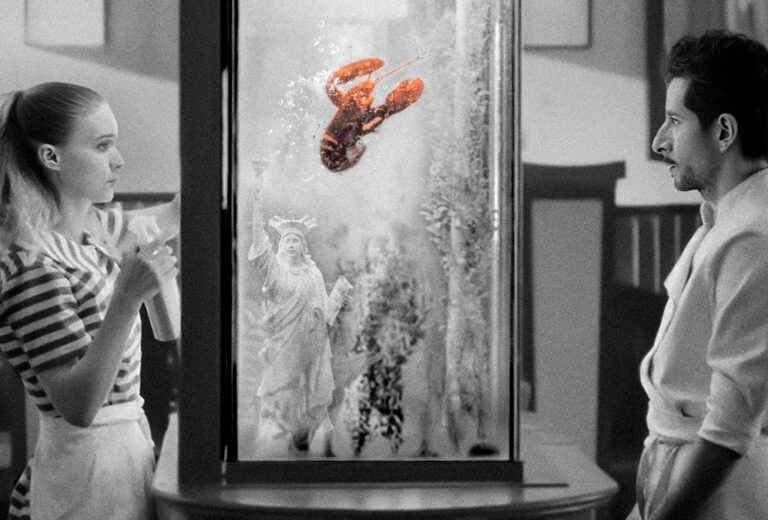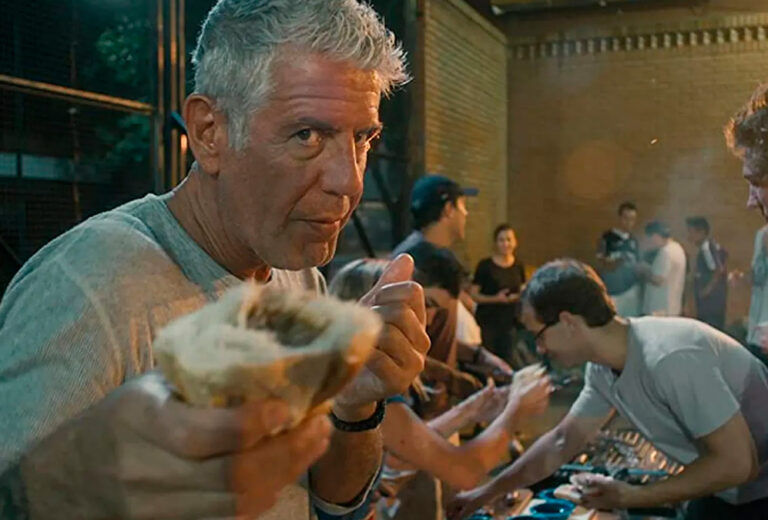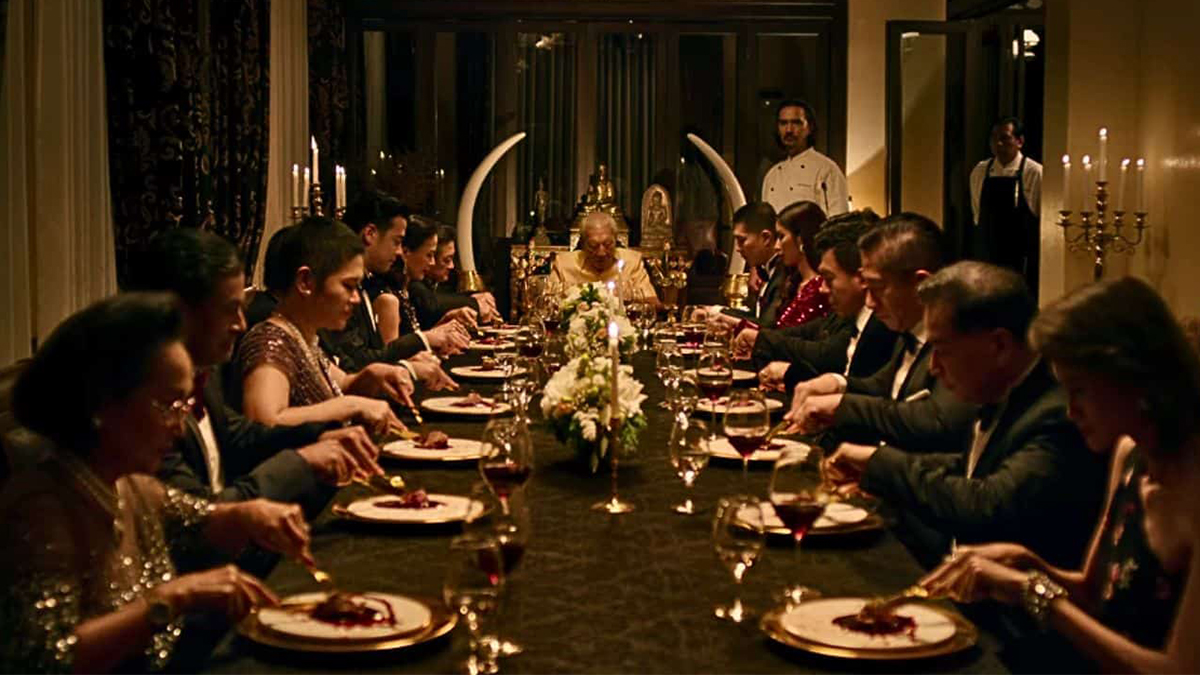Click here to read the Spanish version.
The evasion of depression through food, the eating disorder or the dismantling of the absurd canons of beauty. All of this is framed within a maximalist pressure or force from which Demi Moore, like Elisabeth Sparkle, cannot escape from her own prison based on the violence of control.
The sleaze that fuels the menu of Coralie Fargeat’s ‘The Substance‘ may cause the viewer to be thoroughly indigested from the very first moment. However, since its premiere at the Cannes Film Festival earlier this year, the film has elicited fervent debate and shocked reactions as one of the best films of the year reflecting all the aesthetic pressures and/or hypersexualization to which women are subjected in the age of the cult of beauty.
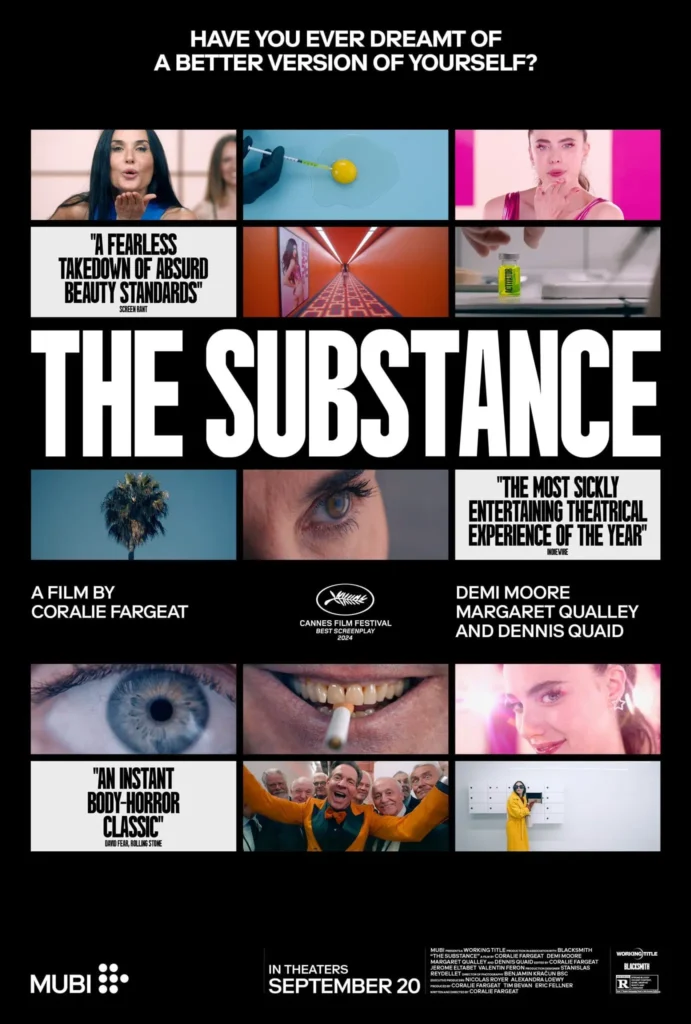
Graphic and symbolic treatment of food
The provocation of the audiovisual work is also projected through the continuous zoom to the food, as a foreshadowing or preview of the body horror that will follow. The close-ups of the food, which seem to cross the screen, generate precisely the desired repulsive effect. Something that we can already see from the beginning of the film with the sequence of the egg yolk being injected with the chemical substance; which in turn presents food as one of the key components of the film’s visual language.

The film projects in a sordid and audacious manner culinary scenes intensified by sound design and presentation from the moment when actress and fitness icon Elisabeth is fired from her TV show by misogynistic producer Harvey; and desperately tries to regain her relevance by resorting to a substance that allows her to engender a ‘much better’ and younger version of herself.
The dark and gloomy perspective of the film runs through the food: Elisabeth does not eat for pleasure, but to hasten the inevitable, knowing that the world will punish her for her uncontrolled eating. Eating what she really wants means taking control of her body in a society that denies it to her.
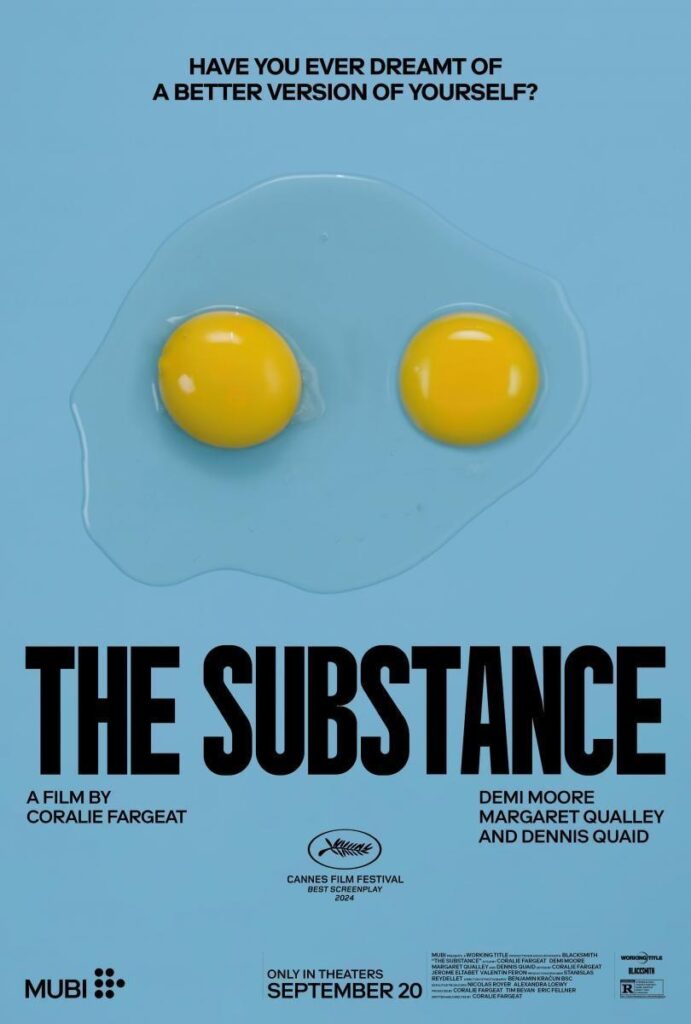
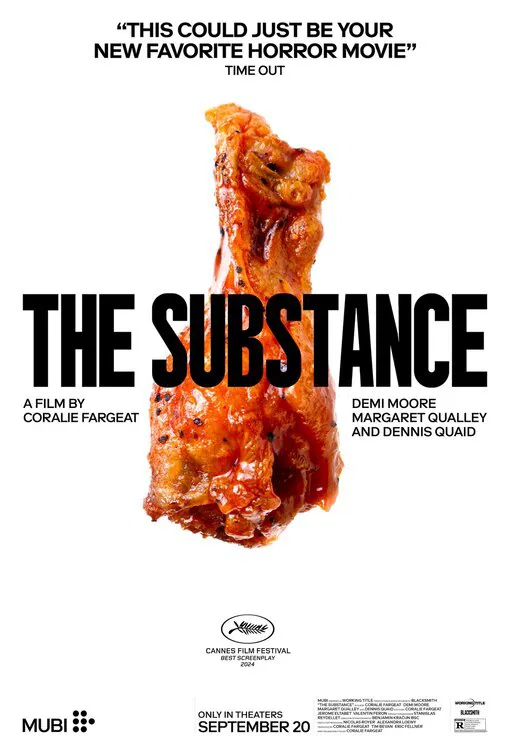
A symbol of violence
Drooling lips tearing food, eviscerated turkeys and overconsumption. All of these decadent scenes advance the body horror sequences that follow. Meanwhile, the way the characters eat turns them into disgusting, gluttonous monsters. See the scene of Harvey eating shrimp, slurping and dismembering them uncontrollably, as an act that substantially represents his role as a toxic and repulsive straight man.
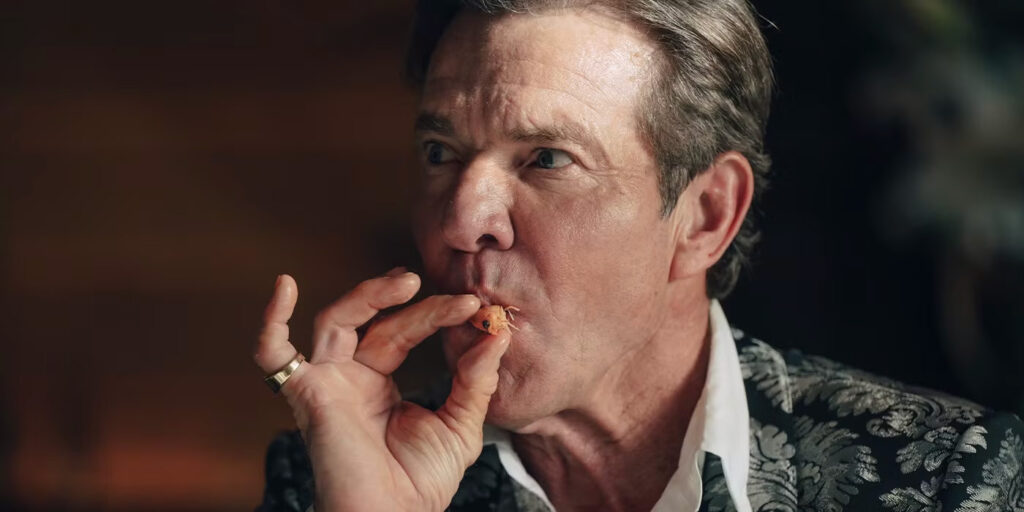
On the other hand, the way Sue sips her drinks also defines her personality, as a being that consumes everything around her. The viewer hears and perceives the craving of each glug glug of her Coke that dilutes human greed, in the same satire of terror in which each food or drink, along with the very act of cooking, becomes an expression of violence.

Under this same vision, it is worth focusing on another of the gastronomic sequences in which Elisabeth is on the Hollywood Walk of Fame, and a passerby drops his fast food order on her plate, staining it with ketchup, as if it were blood. Blood that anticipates the subsequent violence that the protagonist will exert on herself, on her own body with the food.
As the film progresses, the characters, like egg yolk and egg white, become more and more divided. So does their food, marking their dietary divergence. The dictatorship of the body causes Elisabeth from the beginning to limit her food to Martinis with olives or eggs. In her fridge there are only cans of Diet Coke. However, the more she becomes Sue, the more we can see that her self-loathing is also channeled through food.
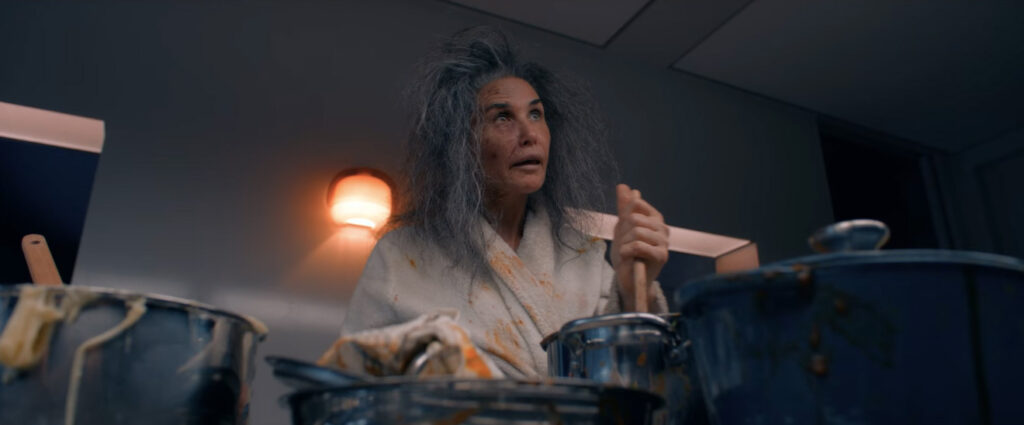
Many times, Sue wakes up after seven days of lethargy to discover that Elisabeth has left piles of chicken bones, waffles and breakfast links in the apartment. Elisabeth realizes that she has every right to eat whatever she wants. Although this uncontrolled eating will cause her to end up having nightmares, as when she imagines a chicken thigh sticking out of her belly button. The torment never ends.


